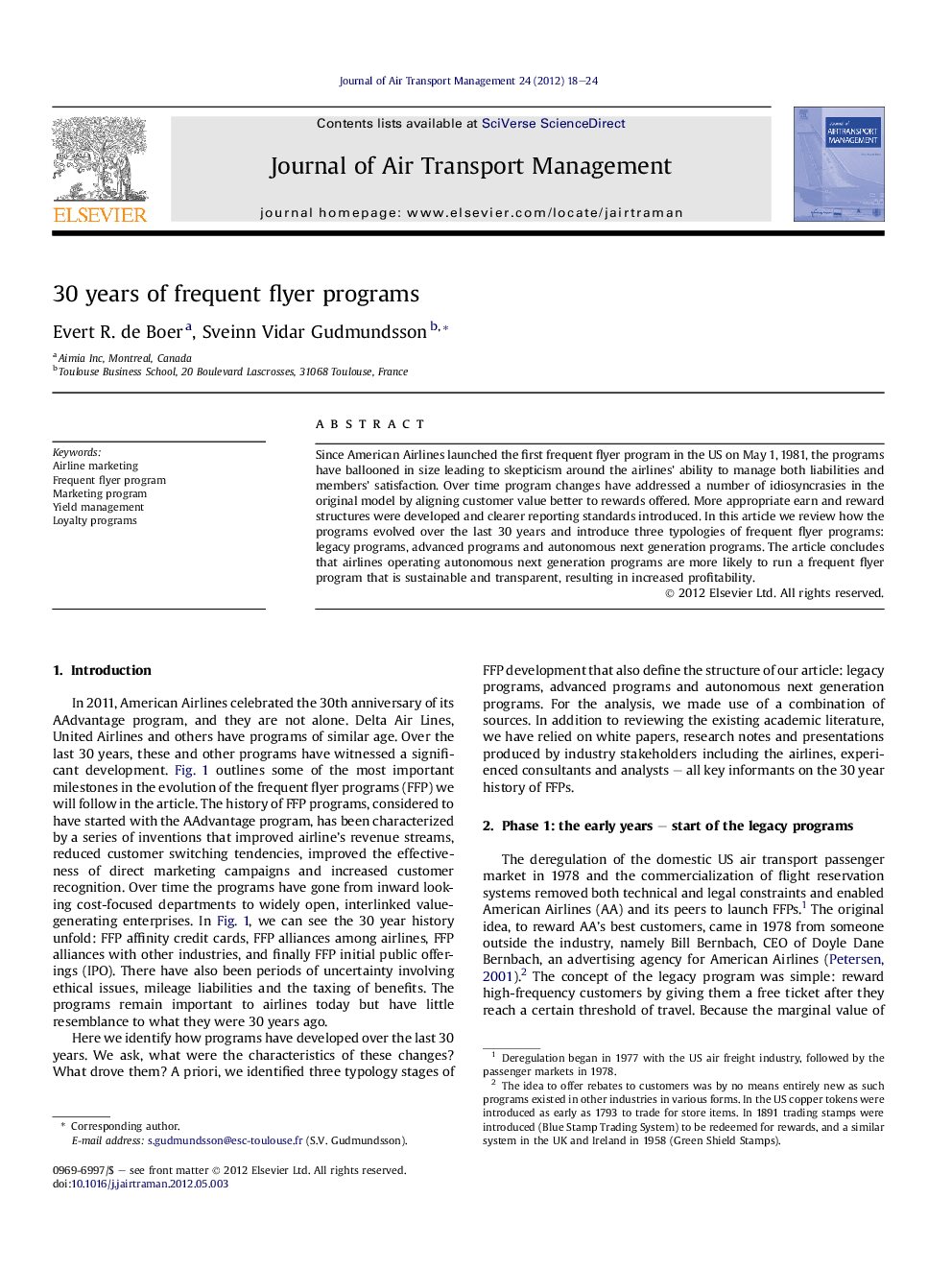| Article ID | Journal | Published Year | Pages | File Type |
|---|---|---|---|---|
| 1031041 | Journal of Air Transport Management | 2012 | 7 Pages |
Since American Airlines launched the first frequent flyer program in the US on May 1, 1981, the programs have ballooned in size leading to skepticism around the airlines' ability to manage both liabilities and members' satisfaction. Over time program changes have addressed a number of idiosyncrasies in the original model by aligning customer value better to rewards offered. More appropriate earn and reward structures were developed and clearer reporting standards introduced. In this article we review how the programs evolved over the last 30 years and introduce three typologies of frequent flyer programs: legacy programs, advanced programs and autonomous next generation programs. The article concludes that airlines operating autonomous next generation programs are more likely to run a frequent flyer program that is sustainable and transparent, resulting in increased profitability.
► We review frequent flyer programs over the last 30 years. ► We suggest three typology stages of frequent flyer programs. ► FFPs have improved customer value alignment to rewards offered. ► NGPs are more likely to offer sustainable and profitable FFPs.
